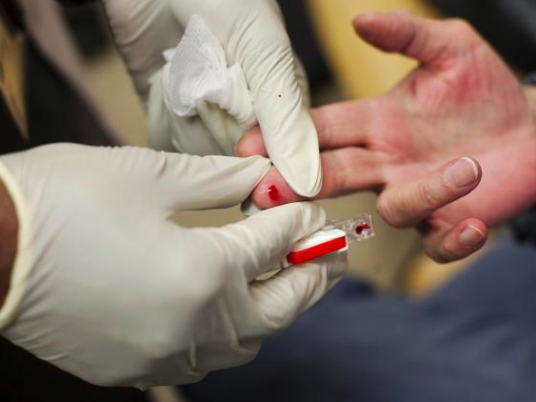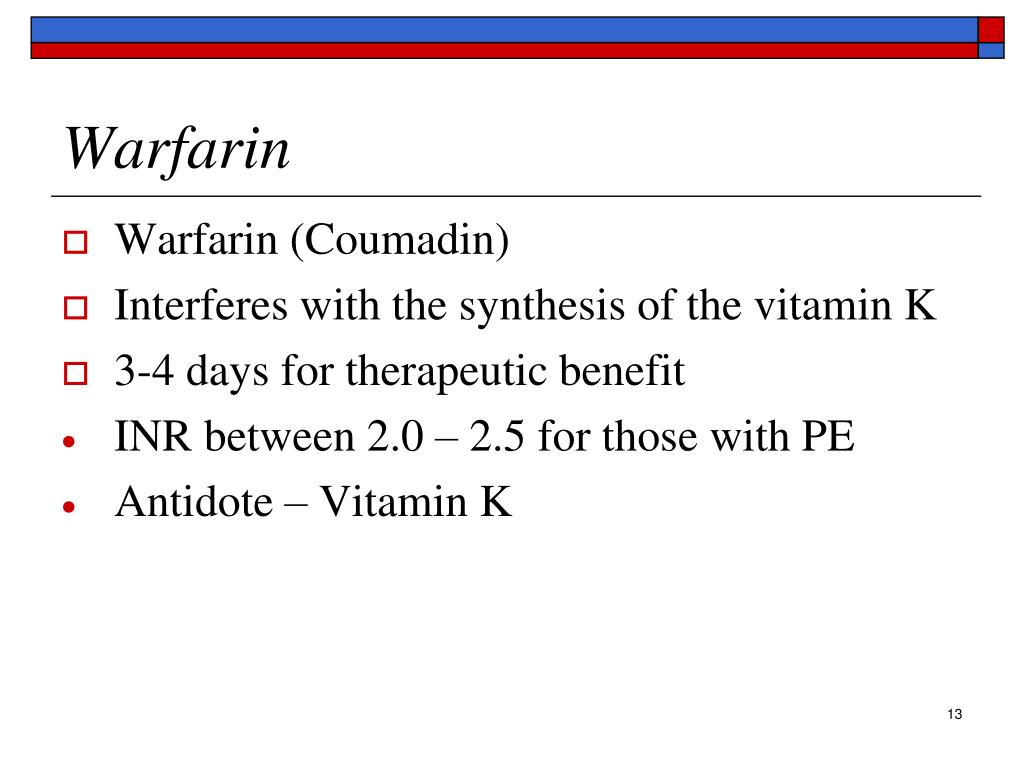
#Coumadin antidote Patch
The client should apply the patch every morning and leave it in place for a 12 to 14 hr, then remove it in the evening. Which of the following instructions should the nurse include in the teaching? Apply the transdermal patch in the morning TERMS IN THIS SET (40) A nurse is teaching a client who has a new prescription for transdermal nitroglycerin to treat angina pectoris. Rationale: Both Buerger's disease and Raynaud's phenomenon have the following clinical manifestations in common: cold sensitivity, ischemic and gangrenous ulcers on fingertips, and color changes of the distal extremity (fingers or toes). Episodes of superficial vein thrombosis *Correct answers: b, c, d* Which clinical manifestations are seen in patients with eitherīuerger's disease or Raynaud's phenomenon (select all that apply)?Į. If the nurse detects these signs, the physician should be notified immediately. Without immediate intervention, ischemia may progress quickly to tissue necrosis and gangrene within a few hours. Clinical manifestations of acute arterial ischemia include any or all of the six Ps : pain, pallor, paralysis, pulselessness, paresthesia, and poikilothermia. Rationale: The patient has potentially developed acute arterial ischemia (sudden interruption in the arterial blood supply to the extremity), caused by an embolism from a cardiac thrombus that occurred as a complication of infective endocarditis. place the bed in reverse Trendelenburg to promote perfusion. notify the physician of the change in peripheral perfusion.ĭ. start anticoagulant therapy with IV heparin.Ĭ. elevate the leg to promote venous return.ī. With pallor, paresthesia, and a loss of peripheral pulses. A patient with infective endocarditis develops sudden left leg pain Patients often try to achieve partial pain relief by dangling the leg over the side of the bed or sleeping in a chair to allow gravity to maximize blood flow. Rest pain occurs more often at night because cardiac output tends to drop during sleep and the limbs are at the level of the heart. Rest pain occurs when blood flow is insufficient to meet basic metabolic requirements of the distal tissues. Rationale: Rest pain most often occurs in the forefoot or toes and is aggravated by limb elevation. decrease in arterial blood flow to the leg muscles during decrease in arterial blood flow to the nerves of the feet.ĭ. increase in retrograde venous blood flow in the legs.Ĭ. vasospasm of small cutaneous arteries in the feet.ī. Rest pain is a manifestation of PAD that occurs due to a chronicĪ. Other risk factors include family history, hypertriglyceridemia, hyperuricemia, increasing age, obesity, sedentary lifestyle, and stress. Rationale: Significant risk factors for peripheral artery disease include tobacco use, hyperlipidemia, elevated levels of high-sensitivity C-reactive protein, diabetes mellitus, and uncontrolled hypertension the most important is tobacco use. sedentary lifestyle and high blood pressure.

Nurse determines that the most important risk factors for peripheralĪrtery disease (PAD) that need to be modified are:ĭ. When developing an individualized care plan for her, the

Use, high blood pressure, high sodium intake, and sedentary lifestyle. Anand said, “Andexanet alfa has been designated as a breakthrough therapy by the FDA, which in essence means that the FDA is reviewing that process very quickly and trying to get this drug to market.” This antidote could save many more than the 200 people it has helped already.TERMS IN THIS SET (40) A 50-year-old woman weighs 95 kg and has a history of tobacco NEW ANTIDOTE: Andexanet alfa is an antidote or reversal agent for people who are taking Factor Ten A, inhibitors which are types of blood thinners. There is clearly a very strong need to develop an antidote for these two particular medications and any other medications that act through a similar mechanism.” Xarelto and Eliquis are the top two prescribed anticoagulants in the United States. The two medications that I’m specifically talking about, Xarelto and Eliquis, to date have no antidote. And Pradaxa which is a novel oral anticoagulant but works through a different mechanism than Xarelto or Eliquis, it also has an antidote that just got released to the market about a year ago. Contrast that to Coumadin: if you come in with a bleeding event we can give you Vitamin K which is a typical antidote that’s used to try to reverse Coumadin immediately. Now medication specifically Xarelto and Eliquis do not have an antidote available to them as of yet. Some examples are Xarelto, Eliquis or Pradaxa. DRUG BACKGROUND: Rishi Anand, MD, Medical Director for the Electrophysiology Laboratory at Holy Cross Hospital explained the difference between old and new blood thinners, and why a new antidote is necessary: “Coumadin is a generic blood thinner that has been on the market for many years and in the last decade there have been new comers to the market which we call novel oral anticoagulants.


 0 kommentar(er)
0 kommentar(er)
